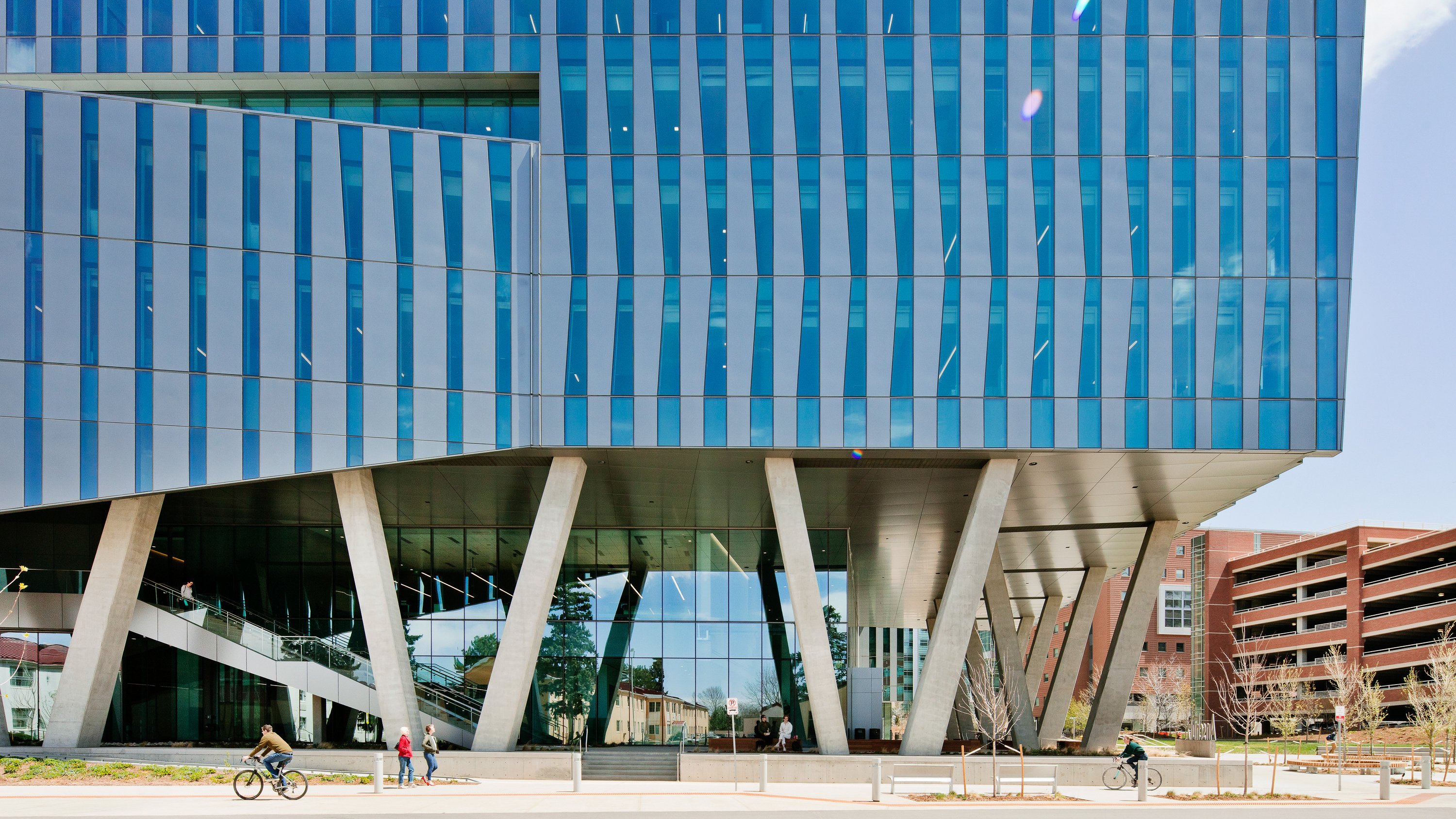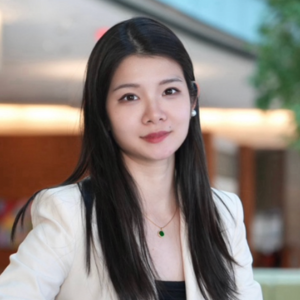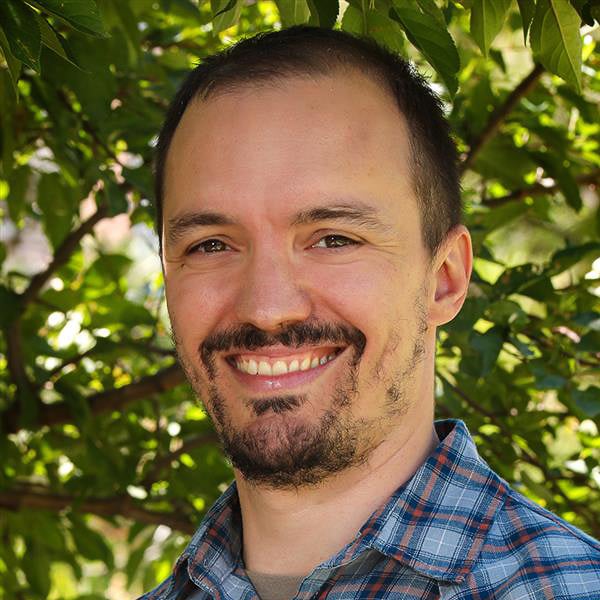Artificial intelligence (AI) is reshaping how we work, write, communicate, and learn. At the University of Colorado Anschutz Medical Campus (CU Anschutz), we are champions of innovation and creativity and encourage exploring new methods across our operations. AI enables our students to think critically, challenge their beliefs, and streamline routine tasks, freeing them to concentrate on their work's most creative and analytical aspects.
Jennifer Richer, PhD, professor of pathology and the dean of the Graduate School at the CU Anschutz Medical Campus, recognizes the significance of leveraging new tools to enhance critical thinking and further research and learning among our students. Her goal is to ensure CU graduates are equipped for the challenges they will face in their careers.
"We need to look ahead and recognize that these changes are already happening in education, research, and care. Our students must be well prepared for this evolving landscape by learning how to use these tools responsibly and critically. Biomedical companies and academia are being transformed by the capabilities now at their fingertips. These advancements can improve equity and enhance cross-disciplinary research. Our students should be equipped to deploy these tools to promote more effective collaboration on large projects." – Jennifer Richer, PhD
In 2023, following the launch of ChatGPT, Richer, along with faculty from the Department of Biomedical Informatics (DBMI) at the University of Colorado School of Medicine (SOM) and other departments on campus, created and implemented AI guidelines for graduate students at CU Anschutz.
The Graduate School at CU Anschutz is committed to cultivating scholars who grasp the strengths, limitations, and biases of AI technologies. Our mission is to prepare students to employ these tools ethically and transparently in various disciplines.
The Graduate School at CU Anschutz and DBMI are dedicated to educating and empowering the next generation of researchers, scientists, nurses, and other medical professionals.
The Intersection of Critical Thinking and AI
Faculty in DBMI note that leveraging AI requires critical thinking skills to advance learning and research. Milton Pividori, PhD, assistant professor of biomedical informatics, and Yanjun Gao, PhD, assistant professor of biomedical informatics, work with their students to implement AI technologies appropriately and encourage critical thinking.
Pividori explained, "We've started assessing various AI tools across different stages of research projects, from literature reviews to coding." The first most important thing to learn, he says, is to write an effective prompt. Pividori shared that when students use AI to summarize articles or papers, they must pay close attention to the outcomes since these models can miss significant details. His lab uses journal clubs to compare what we read and what these tools summarize. Pividori mentioned that comparing AI-generated outputs with your knowledge is a valuable exercise in critical thinking. He asks his students to consider the benefits and drawbacks of these tools throughout their research by distinguishing which tasks require more creativity and can only be done by them, and which ones can be delegated to these models.
We sat down with Sutanu Nandi, a postdoctoral trainee in the Department of Pharmacology, to learn more about his experience using AI, machine learning (ML), and deep learning (DL). Nandi highlighted the importance of integrating critical thinking into his work, "I prioritize model interpretability and ensure that predictions are validated with experimental or biological data. Critical thinking plays a role when selecting the appropriate algorithm for a specific task, balancing model complexity with interpretability, and assessing the quality and potential biases in the data to avoid spurious conclusions."
At CU Anschutz, it is common for projects to involve various fields of study. For instance, Gao highlighted a current lab student who, despite holding a math degree, lacks formal experience with code. She is working on evaluating large language models (LLMs) like ChatGPT for clinical applications. With assistance from AI, she can grasp Python more quickly and write code on par with her computer science peers. When she runs into coding challenges, she turns to ChatGPT to help debug her work, creating a more efficient workflow.
Pividori sees promise in utilizing AI for science writing. AI can aid in formatting and grammar for students, especially those for whom English is a second language. This assistance gives them time to concentrate on their content. He remarks, "Those who speak a second language can see a big benefit by focusing more on the substance of their research rather than on grammar and formatting." Gao added, "Teaching the specific structures required in scientific abstracts is beneficial. By leveraging AI for initial drafts, we can save time and focus on refining our arguments."
Gao has found that journal clubs are an effective way for students to assess published literature and discuss controls and methodologies. By using AI to summarize articles, students can compare the summaries with their own analyses. This helps students to evaluate how well AI captured the key points of the research, deepening their critical thinking skills.
Richer noted that we provide our students with access to copilot for the web to enable them to use these tools in a manner that is compliant with university policies.
Bringing AI to Scientific Research: A Case Study
Nourah Salem, a fourth-year PhD student in the Computational Bioscience Program, recently joined the Gao Lab and is working on a research study using ChatGPT to identify things we know we don't know. Salem's thesis focuses on identifying knowledge gaps in scientific literature—specifically, what we call "ignorance."
She has been using large language models, such as ChatGPT, to extract statements of ignorance from scientific papers. After this extraction, she reached out to the authors of those papers to confirm whether these statements represented knowledge gaps. Impressively, over 80% of the statements identified by ChatGPT were validated by the authors.
"This work is not just about identifying gaps; it's about how we can develop AI agents to assist researchers in finding areas of interest and significance in their fields. Many researchers might overlook certain gaps simply because they don't align with their primary interests." - Yanjun Gao, PhD
Salem recently summarized these findings in a paper submitted to the Conference on Computational Linguistics (COLING), one of the oldest and most respected conferences in computational linguistics and natural language processing. This example of how AI can be used responsibly to enhance scientific discovery highlights the innovative research being conducted on our campus.
Write, Don’t Read with AI
Pividori was recently featured in Nature for his work investigating how to use ChatGPT safely to boost productivity and efficiency for researchers and scientists. He discovered that a safer approach to using chatbots is to ask them to revise content rather than rely on them to read and summarize articles. Trusting an AI to extract necessary information from a text can be risky. He recommends using the chatbot to structure the writing, style, grammar, and formatting so researchers can focus more on valuable scientific ideas. In contrast, the chatbot helps with grammar and formatting.
This method works well with previously gathered content, helping organize it into a coherent paragraph. Reviewing and refining the output is crucial as these tools are still relatively new and have various challenges. The same approach can be applied to coding; if you know what you want your code to achieve, you can create a prompt for the chatbot and test if it works as intended.
Pividori emphasized, "If you don't know how to do something, you should never ask a chatbot to do it." He believes it's essential for his students to fully understand their tasks so they can craft effective prompts that yield accurate results.
The Future of AI at CU Anschutz
AI is here to stay. It's a powerful tool that can advance research, improve patient care, and deepen our understanding of the world. Although our graduate programs can generate specific rules regarding AI use for specific courses, we encourage our students to proactively embrace AI by learning to use these tools ethically and recognize the challenges they present.
Gao shared that she hopes to establish an AI club at CU Anschutz. The club would help students learn how to craft effective prompts, use AI responsibly, and leverage AI to increase innovation.
Pividori noted that AI can support personalized learning by offering tailored resources to students. This allows students to grasp concepts independently while receiving customized feedback based on their unique learning styles. Nandi added, "AI/ML/DL technologies help students tackle complex biomedical challenges, enhance their problem-solving skills, and open doors to interdisciplinary work. These tools are essential for modern research and provide valuable insights into systems biology, genomics, and personalized medicine. Mastering these technologies boosts students' employability and prepares them for a future where AI-driven solutions are key in healthcare and research."
Casey Greene, PhD, professor and founding chair of DBMI, shared, “The release of ChatGPT almost two years ago made a technology that had been bubbling in the tech community immediately accessible to the world. As a university and medical center, it was clear that this would transform education and healthcare." Richer added, "Our mission in the graduate school is to provide students with the education they need to contribute to and lead organizations that will create a more just and healthy future by accelerating research and improving care.”
Bringing AI tools to the classroom can enhance learning, prioritize creativity, and encourage critical thinking. Students will need to understand how to balance technology with human knowledge to embrace the future of AI effectively.




.png)
